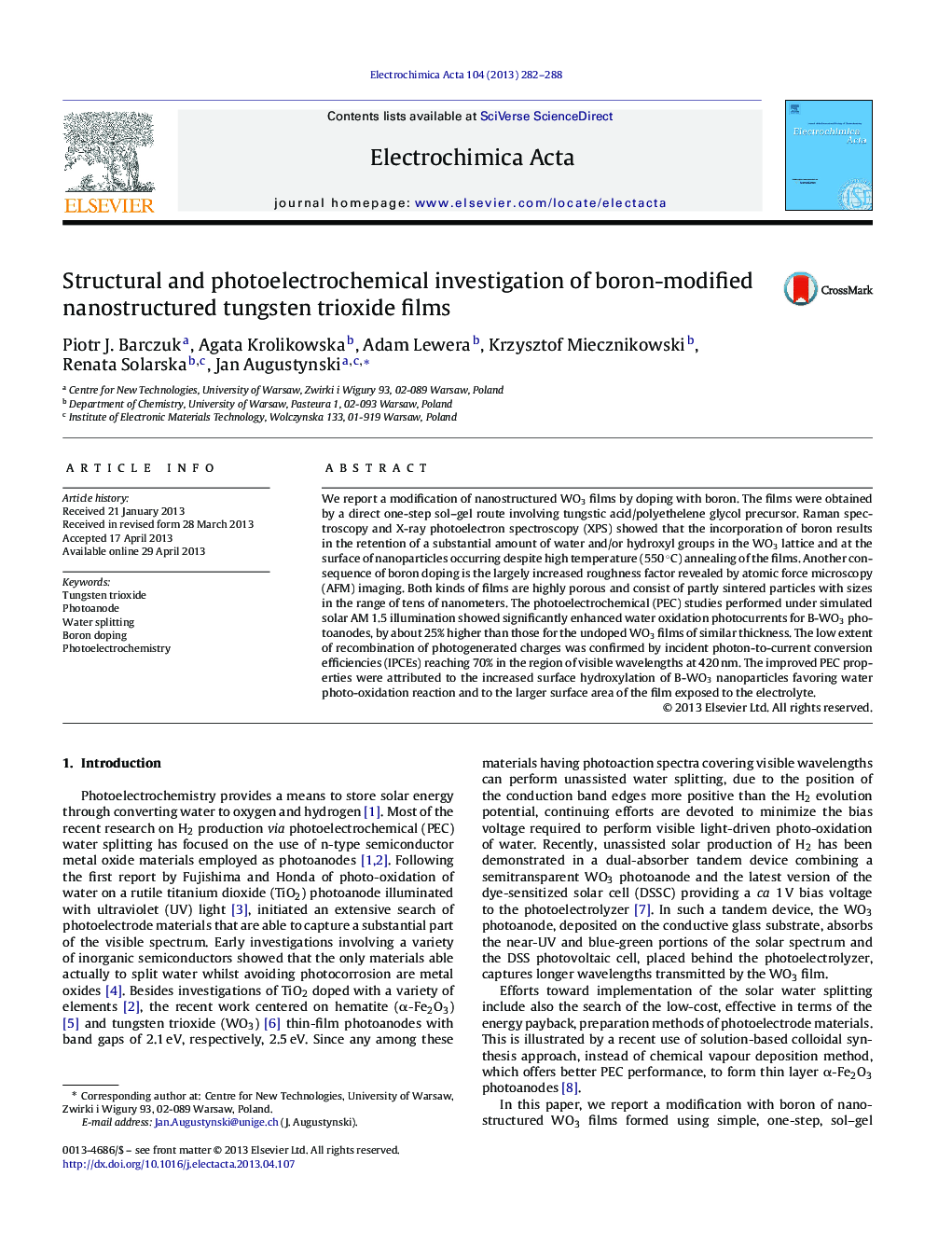| Article ID | Journal | Published Year | Pages | File Type |
|---|---|---|---|---|
| 6617889 | Electrochimica Acta | 2013 | 7 Pages |
Abstract
We report a modification of nanostructured WO3 films by doping with boron. The films were obtained by a direct one-step sol-gel route involving tungstic acid/polyethelene glycol precursor. Raman spectroscopy and X-ray photoelectron spectroscopy (XPS) showed that the incorporation of boron results in the retention of a substantial amount of water and/or hydroxyl groups in the WO3 lattice and at the surface of nanoparticles occurring despite high temperature (550 °C) annealing of the films. Another consequence of boron doping is the largely increased roughness factor revealed by atomic force microscopy (AFM) imaging. Both kinds of films are highly porous and consist of partly sintered particles with sizes in the range of tens of nanometers. The photoelectrochemical (PEC) studies performed under simulated solar AM 1.5 illumination showed significantly enhanced water oxidation photocurrents for B-WO3 photoanodes, by about 25% higher than those for the undoped WO3 films of similar thickness. The low extent of recombination of photogenerated charges was confirmed by incident photon-to-current conversion efficiencies (IPCEs) reaching 70% in the region of visible wavelengths at 420 nm. The improved PEC properties were attributed to the increased surface hydroxylation of B-WO3 nanoparticles favoring water photo-oxidation reaction and to the larger surface area of the film exposed to the electrolyte.
Related Topics
Physical Sciences and Engineering
Chemical Engineering
Chemical Engineering (General)
Authors
Piotr J. Barczuk, Agata Krolikowska, Adam Lewera, Krzysztof Miecznikowski, Renata Solarska, Jan Augustynski,
